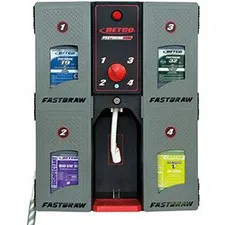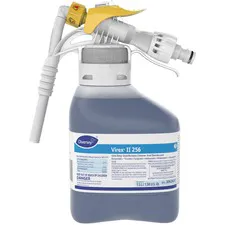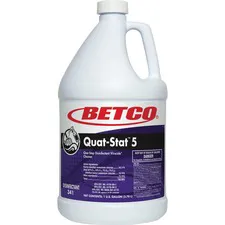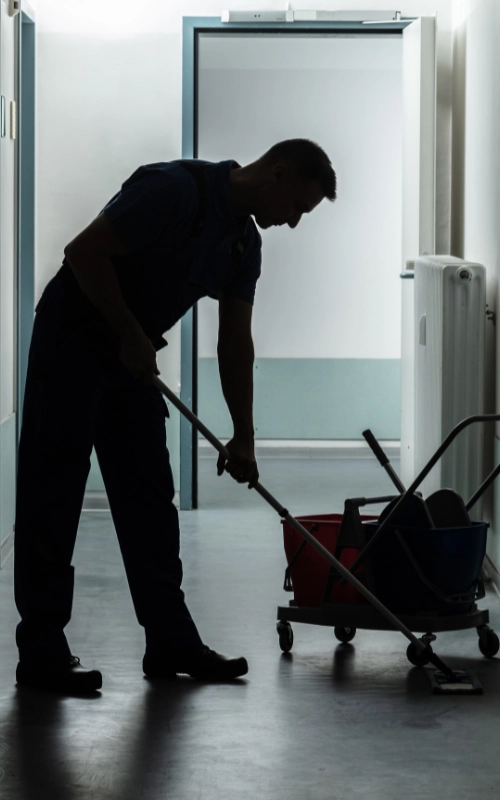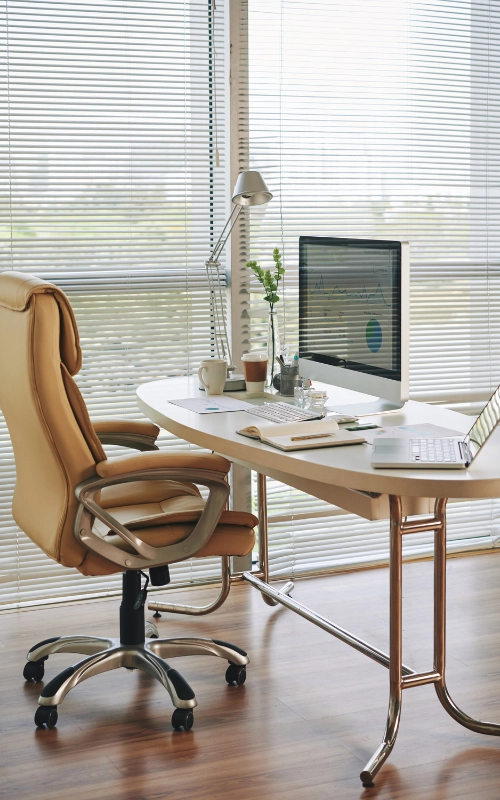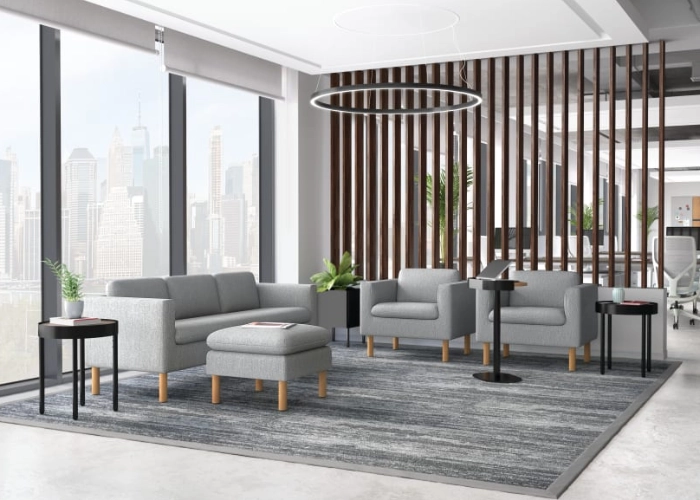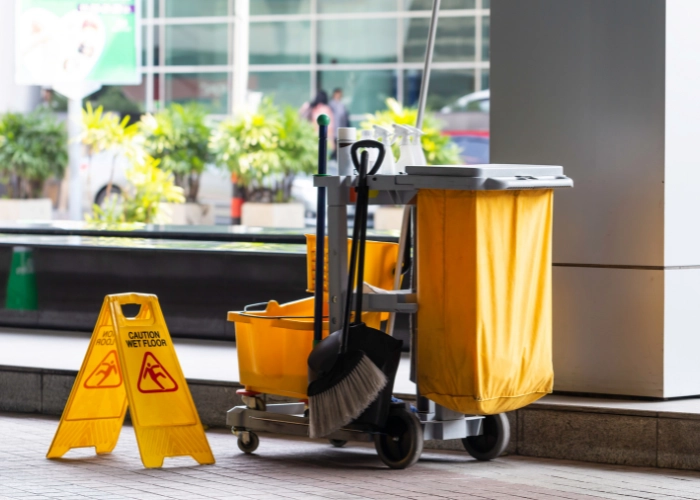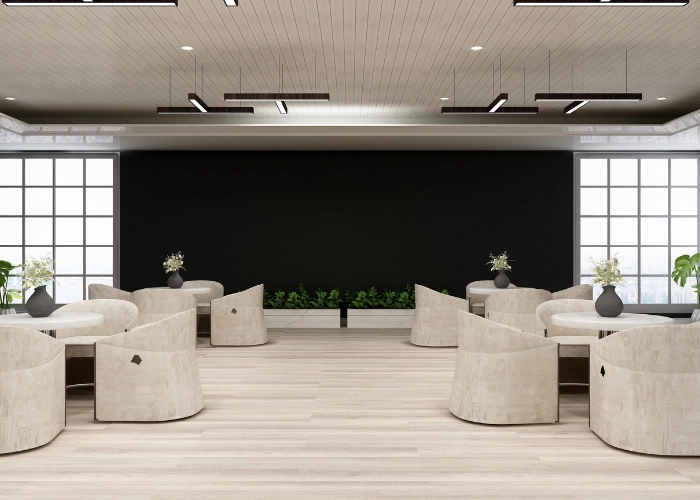Discover Smarter, Safer, and More Effective Mopping Solutions
Welcome to your complete guide to modern mop systems—where efficiency meets hygiene and innovation transforms everyday cleaning. Whether you’re maintaining a healthcare facility, office space, school, or commercial building, the right mopping tools can dramatically improve cleanliness, reduce labor time, and protect your team from cross-contamination risks.
This page is designed to help you understand your options and build a mop system that works for your space. From choosing between microfiber and traditional materials, to understanding which mop style fits your floor type, to properly color coding your equipment for safety—you’ll find everything you need to make informed decisions that support a cleaner, healthier environment.
Explore detailed explanations, real-world use cases, and maintenance tips across all categories:
Microfiber vs. Cotton: Which material offers the best performance and value?
- Dust vs. Damp Mops: When to use each—and why it matters.
- Web Foot Mops, Frames & Handles: Build a durable, ergonomic system.
- Buckets, Wringers & Recharging Tools: Work smarter, not harder.
- Color Coding Systems: Prevent cross-contamination with visual clarity.
- Care & Laundering: Extend the life and performance of your tools.
Let’s get started—and build a smarter floor care routine, one mop at a time.
Smarter Mopping Starts Here
Mops are not one-size-fits-all. The cleaning industry has seen a major shift from traditional cotton mops to modern microfiber systems—and for good reason. Microfiber mops outperform cotton in nearly every category: they hold more dirt, reduce chemical usage, dry faster, and are machine washable for extended life. These benefits not only improve cleanliness but also reduce labor time and cost over the long term.
Microfiber vs. Cotton Comparison:
| Feature | Microfiber | Cotton |
|---|---|---|
| Dirt Retention | High (Electrostatic cling) | Low (Pushes debris around) |
| Drying Time | Fast | Slow |
| Durability | 500+ Washes | 30–50 Washes |
| Water Use | Minimal | Heavy |
| Chemical Usage | Reduced | High |
| Launderability | Yes | Sometimes |
Eco Insight: Microfiber mops contribute to green cleaning programs and LEED certification by reducing water and chemical usage.
Microfiber Dust Mops
Microfiber dust mops are designed to attract and trap fine dust, hair, and allergens using static electricity—making them ideal for preventive cleaning before wet mopping. Available in sizes from 18″ to 72″, they suit a variety of commercial environments, from office buildings to gymnasiums.
Key Options:
- Flat Frame Mops: Lightweight and efficient for smooth, clutter-free floors.
- Fringed Looped Ends: Prevent tangling and enhance debris capture on rough surfaces.
- Color Coding: Green mops often indicate “dry use only” in cleaning protocols.
Best For: Schools, retail stores, showrooms, and other high-dust areas.
Maintenance Tip: Shake off debris daily and wash weekly to maintain electrostatic performance.
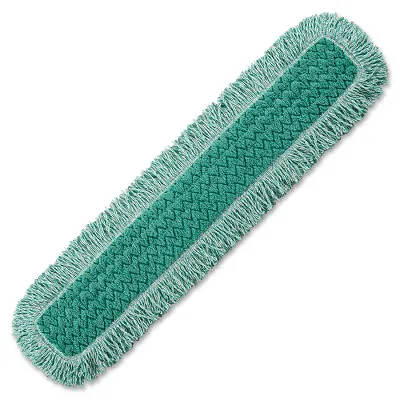
Microfiber Damp Mops
Designed for actual floor washing, microfiber damp mops are available in both flat and traditional looped styles. Flat microfiber mops provide more surface contact and require less liquid to be effective, while tube-style looped microfiber mops are great for absorbing and holding larger volumes of water.
Flat Mop Pads:
- Built-in scrubbing strips for spot cleaning
- Pre-treatable with disinfectants or neutral cleaners
- Ideal for smooth flooring and quick drying
Tube/Loop Mops:
- Resemble traditional mops but with microfiber strands
- Best for deeper cleaning of textured or grout-lined floors
Common Sizes: 18″, 24″, and 36″, allowing customization based on floor area and cleaning speed.
Use Tip: Flat pads are perfect for routine cleaning; tube mops are better for heavy soil removal.
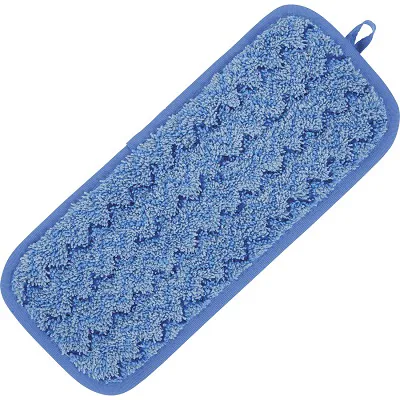
Microfiber Web Foot Mops
These are a premium version of looped microfiber mops, designed with a “webbed” tailband that helps spread the mop evenly across the floor and allows better laundering without tangling.
Benefits:
- High absorbency and rapid moisture release
- Double-sewn tailbands for extended wear
- Antimicrobial options available for healthcare settings
Great For: Healthcare, fitness facilities, commercial kitchens, and any area requiring high soil and moisture pickup with fast dry times.
Pro Tip: Web foot designs work well in facilities that clean large floor areas frequently and need dependable, long-life mop heads.
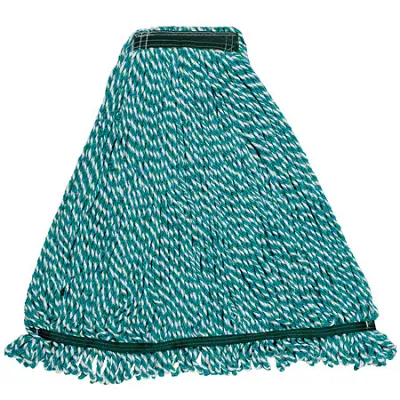
Mop Buckets That Work Smarter
Gone are the days of sloshing water and splashy messes. Mop buckets like the Rubbermaid WaveBrake® are engineered to reduce splashing, improving both safety and cleanliness. They’re available with a variety of wringer styles—down press, side press, or hands-free—and come in multiple colors for zone isolation.
Options to Consider:
- Side-Press Wringer: Most common, easy to use
- Down-Press Wringer: Applies more pressure, ideal for web foot mops
- Hands-Free Systems: Ideal for touchless cleaning environments
Color Coding: Use red for restrooms, blue for general areas, green for food service, and yellow for specialty areas.
Ergonomics Tip: Choose a mop bucket with foot pedals and swivel casters to reduce strain and increase mobility.
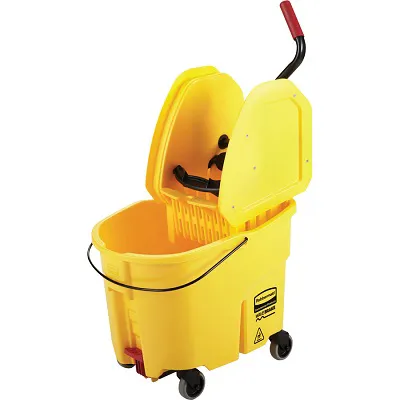
Microfiber Recharging Buckets
A critical part of flat mop systems, recharging buckets are used to pre-saturate microfiber pads with solution before cleaning. This method ensures consistent moisture across all mopping pads, reduces waste, and eliminates the need for wringing.
How It Works:
- Load multiple microfiber pads
- Add a measured dose of diluted cleaning solution
- Seal and allow mops to soak until use
Coverage: A single 6-gallon bucket can prep up to 20 mop pads—enough for most daily shifts.
Best Use: Healthcare, Schools, hospitality, and facility services where mop changes between rooms are essential to avoid cross-contamination.
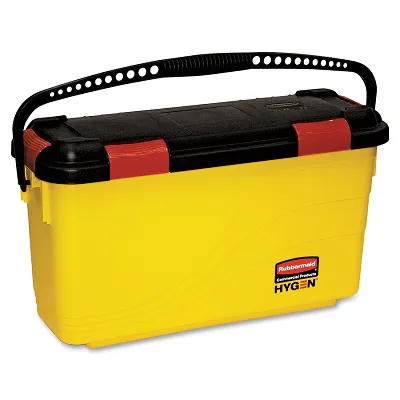
Mop Handles & Frames
Mop productivity starts with the right handle and frame. Whether you’re using a flat mop or a traditional string mop, the connection system matters. Choose from quick-connect, screw-threaded, or clamp-style attachments depending on your mop head.
Handle Materials:
- Aluminum: Lightweight and corrosion-resistant
- Fiberglass: Durable and chemical-resistant
- Wood: Economical but less ergonomic
Handle Features:
- Ergonomic grips for comfort
- Extendable/telescoping styles for versatility
- Lock-in-place heads for better control
Tip: Ensure your frame matches the pad or mop width (18″, 24″, 36″) to maintain proper floor coverage.
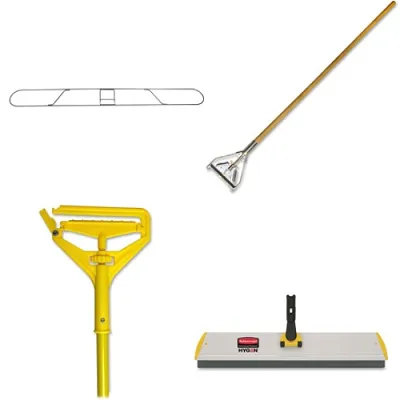
Swiffer® Sweepers for Quick Cleaning
Lightweight and easy to use, Swiffer® Sweepers are perfect for small-scale or interim cleaning tasks. They’re compatible with a wide range of disposable pads for both dusting and wet mopping.
Refill Types:
- Dry Sheets: For dust, dirt, and pet hair
- Wet Cloths: Light cleaning and spill pickup
- Disinfecting Pads: EPA-registered solutions for sanitizing high-touch areas
Ideal Environments: Office breakrooms, classrooms, clinics, and residential-style workspaces
Note: Not suitable for industrial or heavily soiled areas.
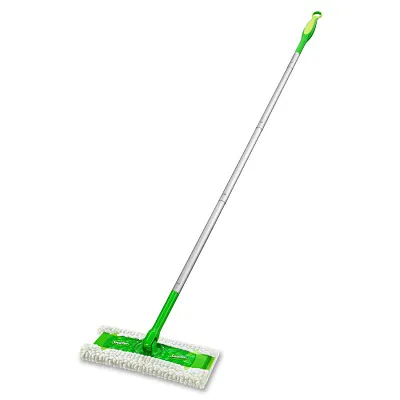
Color Coding & Mop Care
Prevent Cross-Contamination with Confidence
Color coding is more than just a best practice—it’s a vital part of any professional cleaning system, especially in environments that require strict hygiene standards. Whether you’re cleaning a hospital, a school, an office building, or a commercial kitchen, using a consistent color-coded system ensures cleaning tools are used where they belong—and nowhere else.
🚦 Why Color Coding Matters:
- Reduces Cross-Contamination: Assigning specific colors to specific zones or tasks prevents bacteria from high-risk areas (like restrooms) from spreading to clean zones (like breakrooms).
- Improves Compliance: Supports OSHA, HACCP, and infection control protocols in industries like healthcare, education, and food service.
- Simplifies Training: New team members can quickly learn and follow procedures with visual color guidance.
- Boosts Professionalism: Clients and visitors notice a clean, organized, and methodical approach to cleaning.
Suggested Color Assignments:
| Color | Recommended Use | Reason |
|---|---|---|
| 🔴 Red | Restrooms and Toilet Areas | High risk of germ and bacteria contamination |
| 🔵 Blue | General Low-Risk Areas (offices, lobbies) | Safe for most public or common areas |
| 🟢 Green | Food Service, Kitchens, Cafeterias | Indicates hygiene and food-safe zones |
| 🟡 Yellow | Specialty Areas (isolation rooms, labs) | Can be used for biohazards or sensitive cleaning |
| 🟣 Purple | Patient Care (optional in healthcare) | For critical hygiene areas in hospitals or clinics |
💡 Tip: Post a color chart in janitorial closets or on cleaning carts to reinforce correct usage.
🧺 Proper Care for Microfiber Mops & Cloths
To ensure microfiber tools continue performing at their best, follow these care guidelines:
✅ Laundering Instructions:
- Separate Loads: Wash microfiber separately from cotton, lint-producing fabrics, or heavily soiled items.
- Water Temperature: Use warm or cold water. Avoid hot water, which can damage the fibers.
- Detergent: Use mild, unscented detergent. Avoid fabric softener and bleach—these coat and destroy microfiber.
- Drying: Air dry or tumble dry on low. High heat can shrink or melt microfiber strands.
🔄 Rotation & Replacement:
- Rotate mops regularly to extend usage life and reduce wear.
- Inspect for thinning or fraying—most microfiber mops are effective for 250–500 washes.
- Track usage and set replacement schedules based on zone and soil load.
📘 Implementation Tip:
To roll out a color coding system:
- Assign Colors to rooms/tasks and document them.
- Label Carts & Closets with visual cues.
- Train Staff during onboarding and refresher sessions.
- Audit Regularly to ensure compliance and update as needed.

